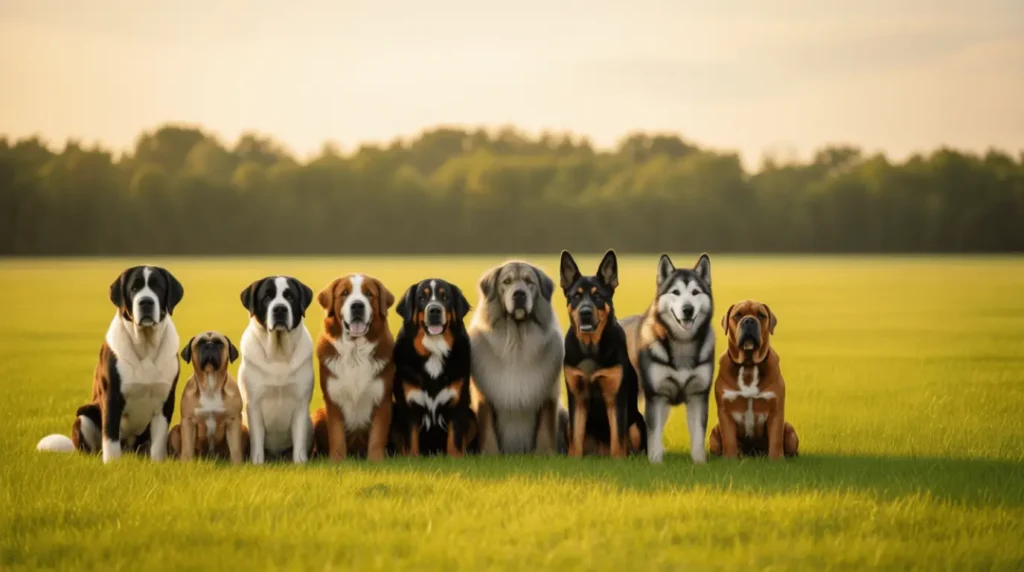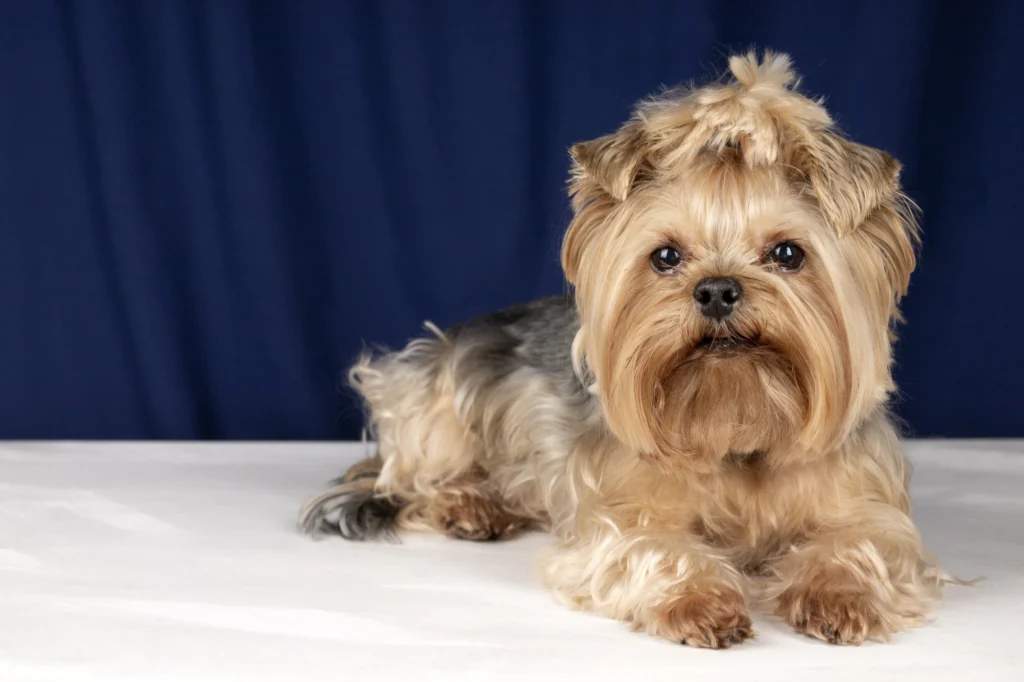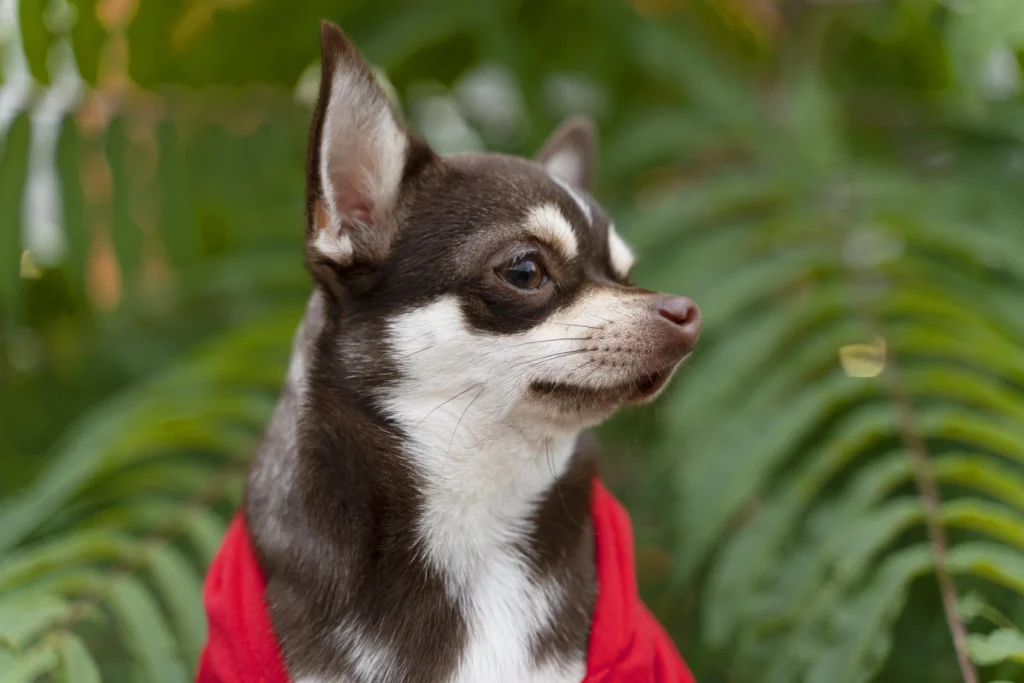Giant and big dog breeds intrigue us because of their considerable size, dignity and, often, calm demeanours. However, all of that size comes with requirements such as: more space, more care, and more in terms of thoughtful management.
What Makes These Dogs “Big / Giant”? Key Differences & Risks
1. Definition & Growth Habits
- Giant breed dogs are generally classified in terms of a breed’s potential to attain a body weight of ~45 kg (≈100 lb).
- Giant breed dogs exhibit growth for a longer period of time, as growth plates close (and faster) for giant breed dogs than for other breeds, in which the growth plates close early (typically 12+ to 18 months) (Canine Arthritis Resources and Education, 2024).
2. Health Risks More Common in Giant Breeds
Joint & skeletal disorders: Hip dysplasia, elbow dysplasia, osteoarthritis
Gastric dilatation-volvulus (GDV or bloat): life-threatening twist of the stomach
Cardiac issues: Dilated cardiomyopathy, congenital heart disease
Lifespan: In general, lifespan is less (i.e., most live ~6–10 years) than smaller breeds (including mixes).
Heat intolerance: due to size, coat, and lower surface area to volume
Skin, ear, and fold infections with some breeds with droopy skin, especially in breeds. (i.e., Neapolitan Mastiff)
3. Challenges with Infrastructure and Care
- Many vet clinics, grooming salons, or pet services are not prepared to accommodate a very large dog (Sassafras Patterdale, CPDT-KA, CTDI, 2021).
- Doors, crates, beds, transport
- Guidelines on Raising and Caring for Giant Dog Breeds (All Life Stages)
- Listing below is an abbreviated, evidence-based guideline to caring for larger/giant breed dogs, in several categories
Nutrition and
Dietary Need
Feed a large-breed or giant-breed formula dog food. These are formulated to be balanced for controlled growth, support healthy joint development (glucosamine, DHA, chondroitin, etc.) and are lower in calorie density to prevent excessive weight gain.
Meal frequency and portioning:
- Puppies: 3-4 meals a day, spaced apart and then subsequently higher volume meals, to spread the load and avoid possible gastric-dilatation volvulus (GDV/bloat).
- Adult: 2-3 meals a day; avoid free feeding.
- Triggers/conditions that cause excessive growth: overfeeding appropriate for other-sized breeds, excessive calcium & vitamin D supplementation, and a diet that is too calorie dense are triggers for developmental orthopaedic disease (DOD).
- Supplements: Give joint-supporting supplements (glucosamine, chondroitin & omega-3s) at an early age to possibly lower the risk of arthritis later in life. Always consult a veterinarian.
- Water & feeding mechanics: Use slow-feeder bowls or puzzle bowls to slow water intake and feeding to avoid undue GDV/bloat complications.
- Avoid “all life stage” diets: Many are “calorie dense” which isn’t typically appropriate for larger/giant breeds.
Exercise & Activity
- Moderate, controlled exercise is preferable to high-impact or lengthy exercise (especially while young).
- Avoid heavy exercise that causes stress on joints (such as jumping and running long distances) prior to skeletal maturity.
- Daily good quality walks, such as 30 minutes, with mental stimulation (puzzles, training) can be beneficial. Swimming is often the perfect fit for many giant breeds (e.g., Newfoundland) due to low impact.
- Exercise should be adjusted during hot (or humid) weather. Large animals are much more susceptible to overheating.
Training Behaviors & Socialization
- Socialisation (people, animals & environments) reduces aggression by fear.
- Begin training early. Large breeds have to be manageable, simple commands such as “sit,” “stay,” “come”, and leash position are essential.
- Positively reinforce behaviour; do not use extreme punishment as this may induce defensiveness.
- Also, mental enrichment (puzzles, games) helps avoid boredom, which can lead to destruction.
Housing, Bedding & Infrastructure
- Use an orthopaedic bed or mattress to alleviate pressure on joints.
- Crates, kennels, and gates must all be large enough for them to stand, turn, and lie comfortably.
- Floors should accommodate great traction (i.e., avoid slippery floors) to avoid joint injury. Proper airflow, access to shade and a cool place to rest are important.
- Dog doors, fencing and gates should accommodate the dog’s height (or weight).
Veterinary and Health Monitoring
- At least two times yearly for giant breeds (probably more often as they age).
- Weigh them carefully, even a little overweight giant dogs put a lot of stress on their joints.
- Get their hips/elbows x-rayed early on, heart checks, screenings for breed-specific problems.
- Be aware of signs of bloat (distended abdomen, trying to vomit, restlessness) – bloat is an emergency.
- For breeds at very high risk of GDV, consider gastropexy (surgical fix) prophylactically if it has been recommended by a veterinarian.
- Keep vaccinations, deworming, dental care, and parasite prevention on a routine.
- Depending on the breed, regular grooming may include: brushing, nail trimming, ear care (especially if ears are droopy), and skin fold care (like in Neapolitan Mastiff) is important.
Lifecycle and ageing considerations
- As dogs age, they reduce exercise levels and transition to a senior diet with joint care (e.g. senior food formulas).
- Provide ramps or steps so they do not add strain to their joints when getting in or out of vehicles or onto furniture.
- Monitor for arthritis, weight gain, congestive heart disease and dental disease more aggressively as they get older.
17 Of The Largest Dog Breeds: Summary & Profiles
Below is a proposed list of 17 of the largest breeds of dog. Some dogs in the list are recognised more for their height (i.e. Irish Wolfhound), while others are noted for their overall mass (i.e. Mastiff).
1. English Mastiff
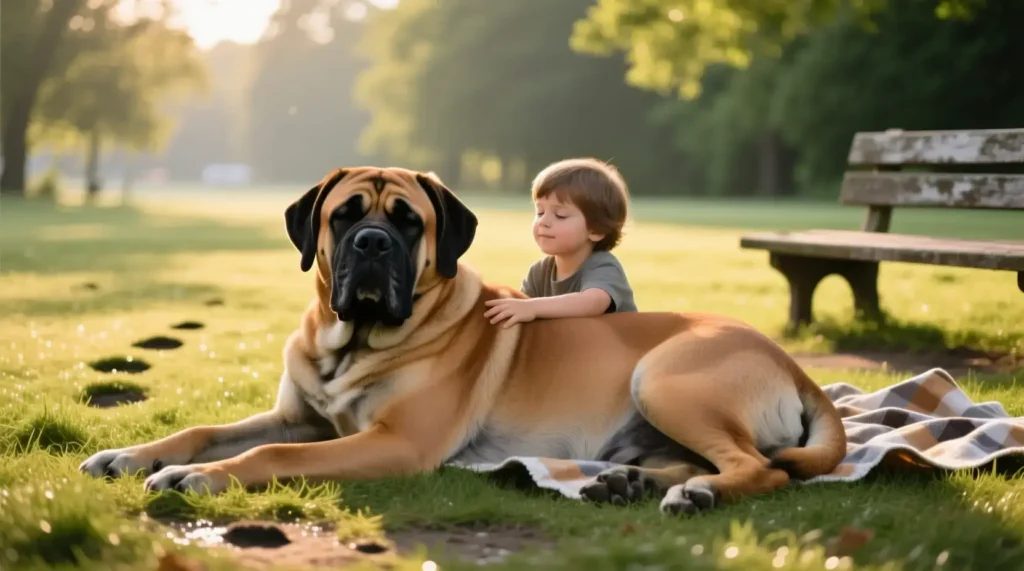
Weight: 170–230 pounds
Height: 27–30 inches
The English Mastiff is one of the heaviest dogs in the world, known for its colossal frame and calm temperament. Despite its intimidating appearance, it’s a gentle guardian that forms deep bonds with its family. Because of its size, owners should pay close attention to joint, hip, and heart health through a balanced diet and moderate exercise.
2. Great Dane
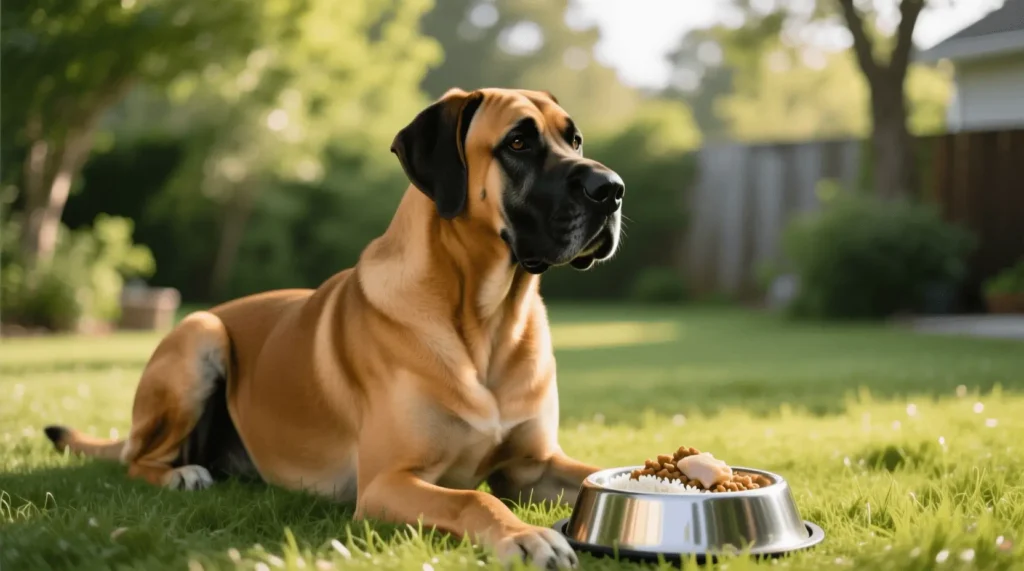
Weight: 120–200 pounds
Height: 28–32 inches
The Great Dane, often called the “Apollo of Dogs,” combines elegance with enormous stature. These dogs are affectionate and loyal, though they require plenty of room to move comfortably. Careful monitoring for bloat (gastric torsion) is essential, as the condition can be life-threatening for this tall, deep-chested breed.
3. Irish Wolfhound
Weight: 105–120 pounds
Height: 30+ inches
The Irish Wolfhound is considered the tallest of all dog breeds, with some standing over 3 feet at the shoulder. This noble breed is affectionate yet sensitive, thriving on gentle training and companionship. However, their rapid growth makes them vulnerable to bone and joint issues, so controlled exercise and proper nutrition are key.
4. Saint Bernard
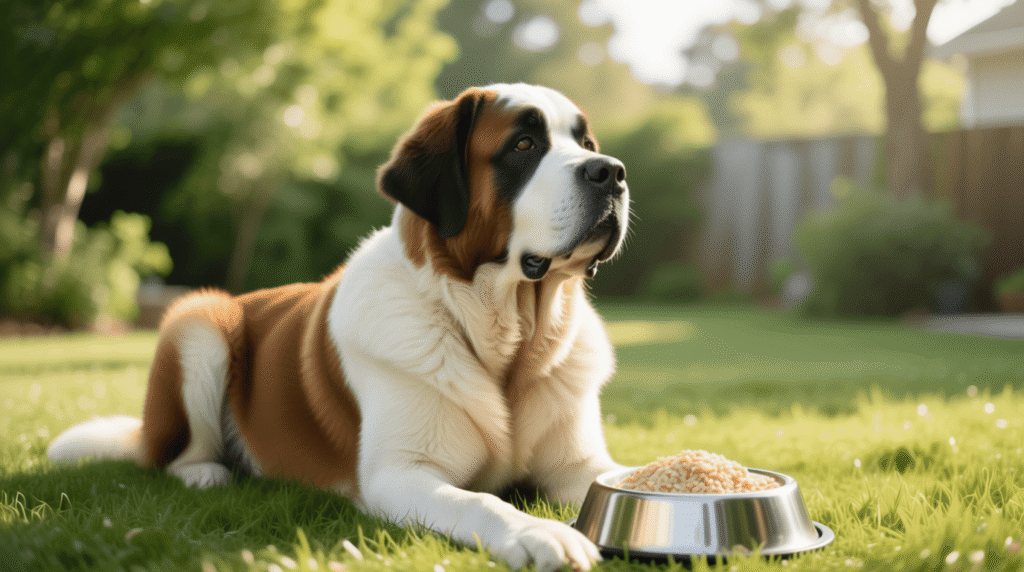
Weight: 140–200 pounds
Height: 26–30 inches
Bred in the Swiss Alps for rescue missions, the Saint Bernard is strong, kind, and patient. These gentle giants are great with families but can overheat easily due to their dense coats. Regular grooming and a cool resting space help them stay comfortable in warm climates.
5. Neapolitan Mastiff
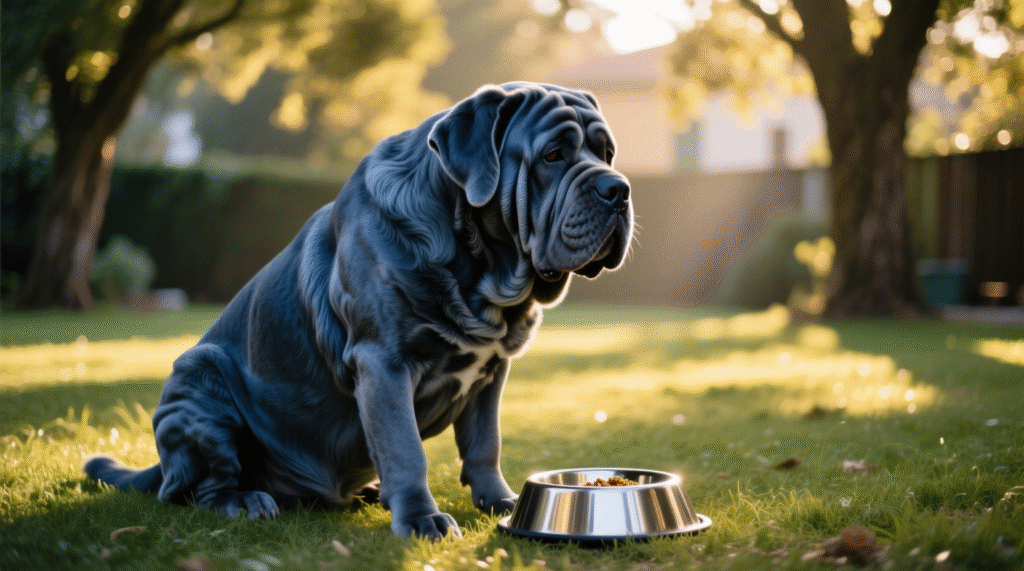
Weight: 110–150 pounds
Height: 24–31 inches
The Neapolitan Mastiff is instantly recognizable with its deep wrinkles and droopy jowls. Despite its intimidating look, this Italian guardian is affectionate and loyal. Pet parents should clean skin folds regularly to prevent infections and manage drool with proper hygiene.
6. Newfoundland
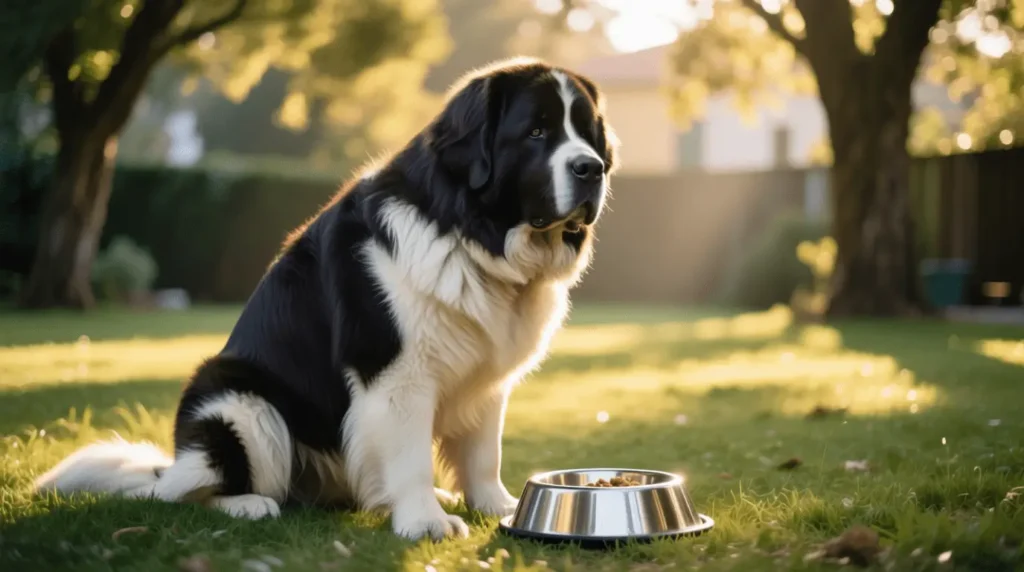
Weight: 100–150 pounds
Height: 26–28 inches
The Newfoundland is a gentle, water-loving breed originally used in maritime rescue. These massive dogs are calm, dependable, and great swimmers. Regular grooming is needed to maintain their thick coats, and joint health should be monitored as they age.
7. Leonberger
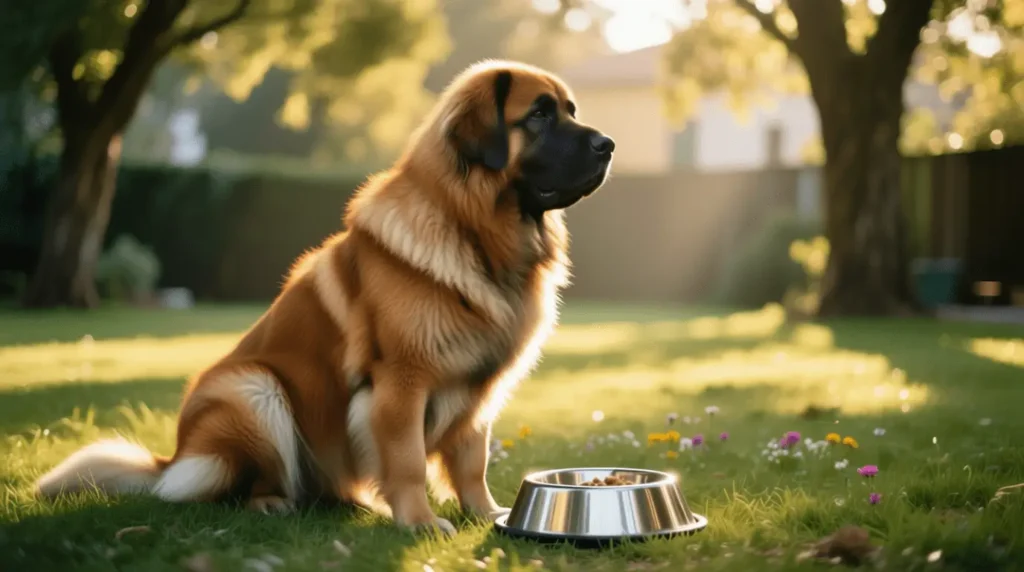
Weight: 90–170 pounds
Height: 25.5–31.5 inches
The Leonberger combines strength and elegance in a large, affectionate companion. Bred as a working and family dog, it loves having a purpose but also enjoys relaxed time with loved ones. Regular veterinary checks help prevent joint and heart issues common in large breeds.
8. Tibetan Mastiff
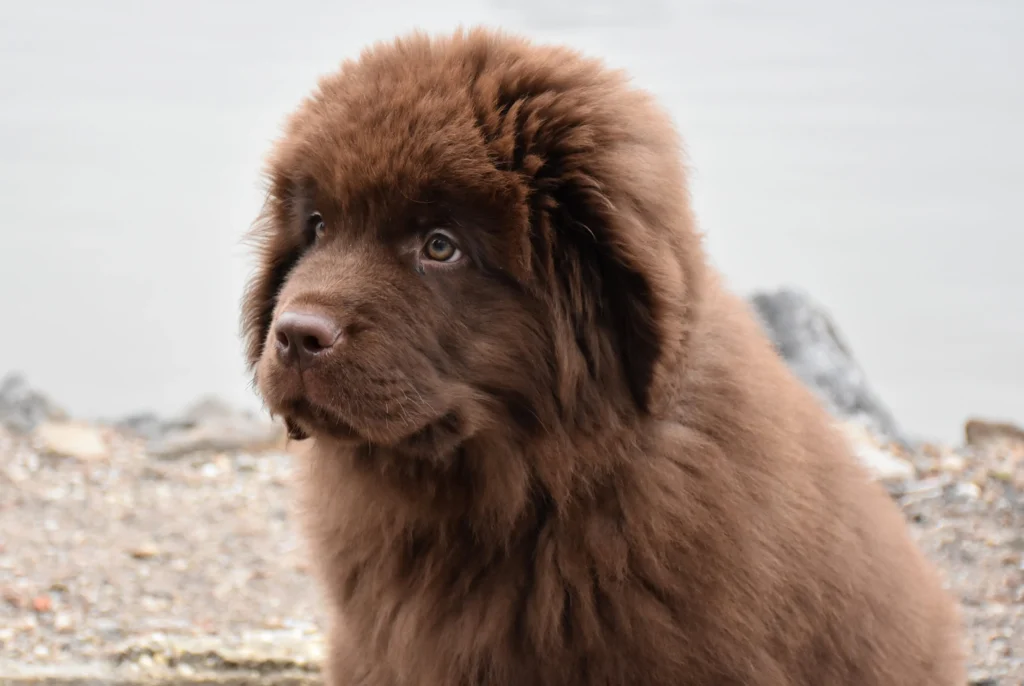
Weight: 100–160 pounds
Height: 24–30 inches
The Tibetan Mastiff is a powerful, independent guardian with a thick double coat built for cold climates. Originally bred to protect livestock, it remains alert and loyal. In warmer regions, special care should be taken to prevent overheating and to provide ample shade and hydration.
9. Anatolian Shepherd
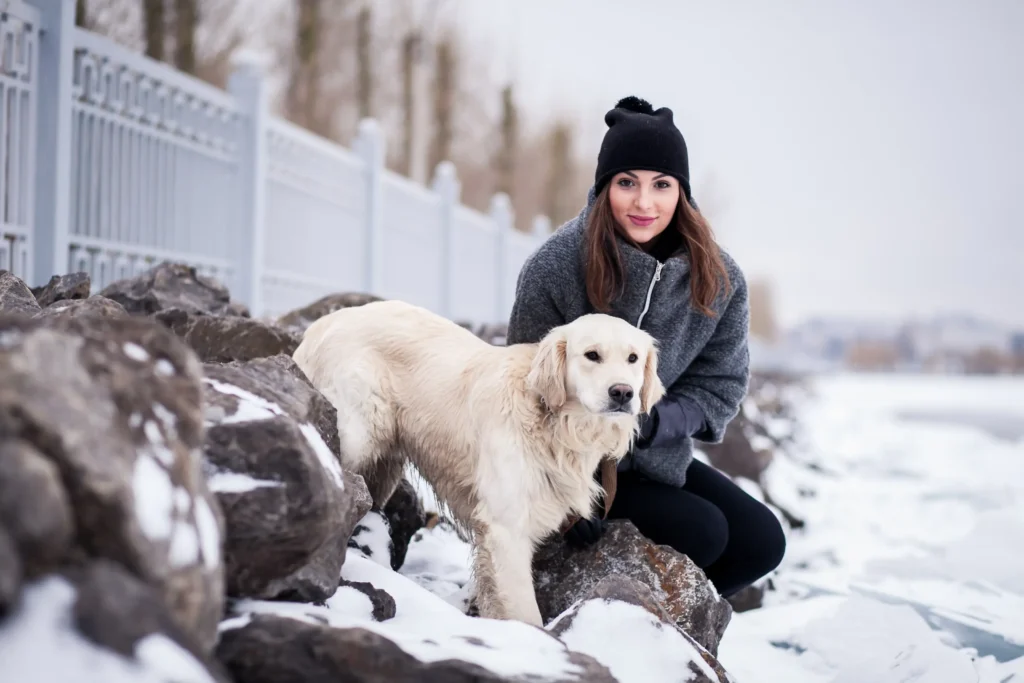
Weight: 80–150 pounds
Height: 25–29 inches
The Anatolian Shepherd is a rugged protector with centuries of history guarding livestock. Known for its independence and keen senses, it thrives with consistent training and early socialization. A confident owner is essential to guide its strong territorial instincts.
10. Cane Corso
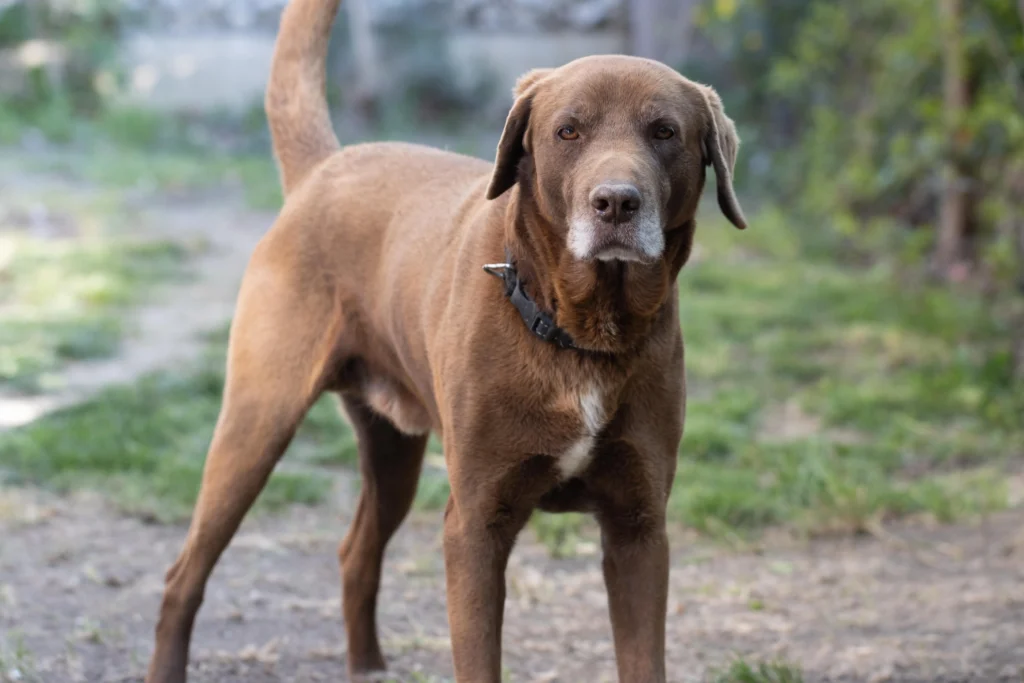
Weight: 88–120 pounds
Height: 23–27 inches
The Cane Corso is a muscular Italian breed admired for its intelligence and loyalty. Naturally protective, it excels as a family guardian when properly trained. Structured socialization from puppyhood helps it grow into a calm and confident adult.
11. Bullmastiff
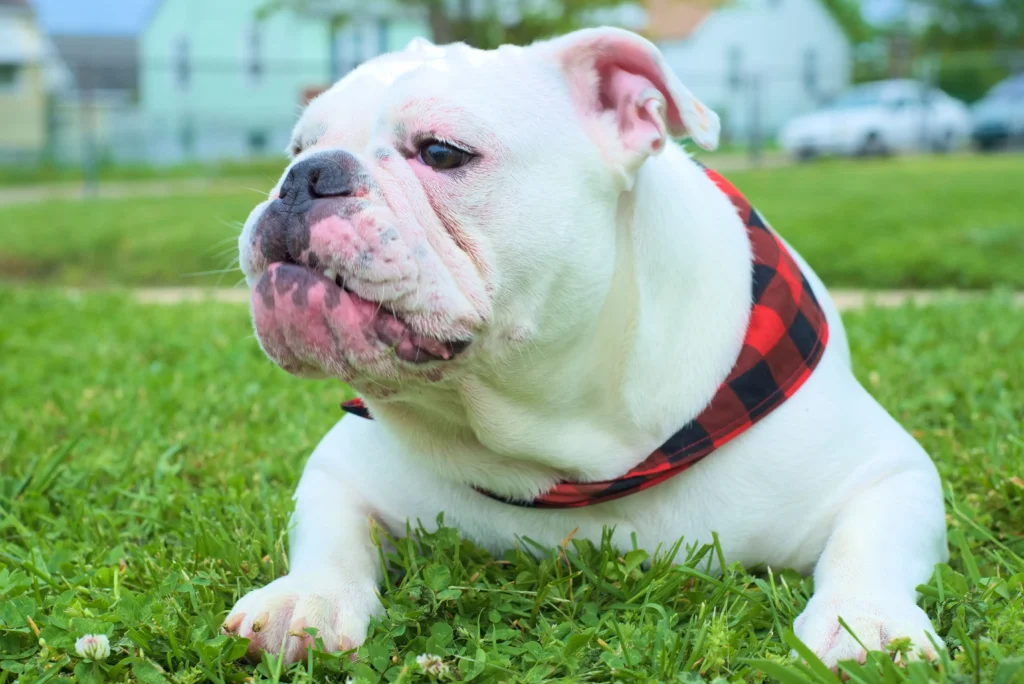
Weight: 100–130 pounds
Height: 24–27 inches
The Bullmastiff was bred as a silent estate guard dog, combining the strength of a Mastiff with the determination of a Bulldog. Despite its protective nature, it’s affectionate with family. Routine health checks for hips and heart are important for this solid, short-nosed breed.
12. Black Russian Terrier
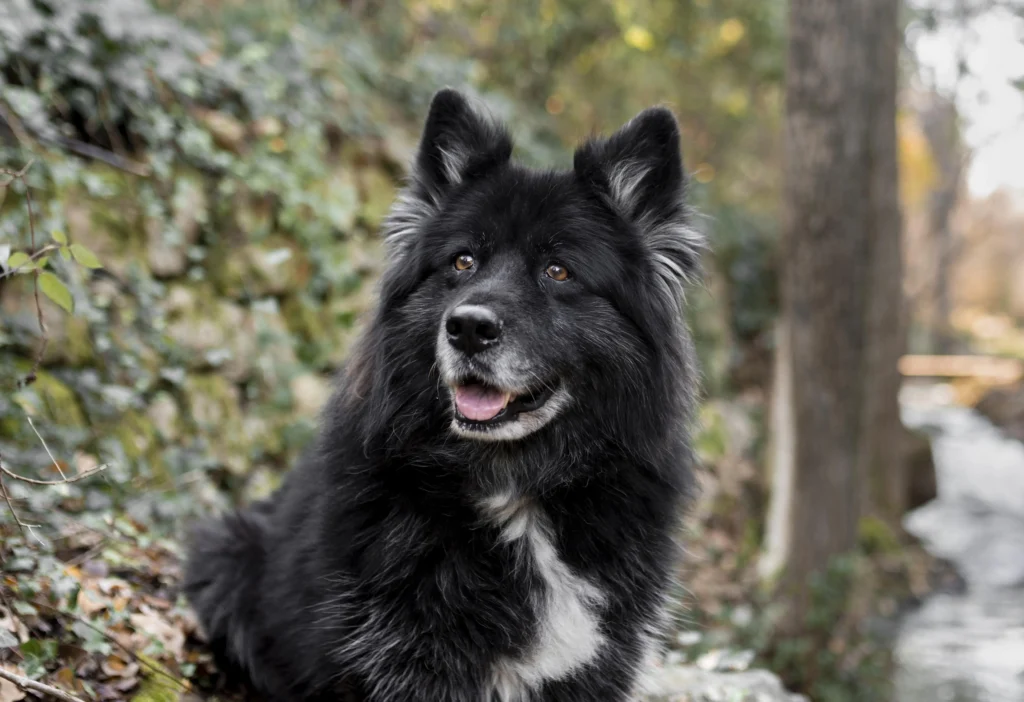
Weight: 80–130 pounds
Height: 26–30 inches
Originally developed for military and police work, the Black Russian Terrier is a courageous and intelligent worker. These dogs form strong bonds with their families and thrive on mental and physical stimulation. Consistent leadership keeps their confidence balanced with obedience.
13. Great Pyrenees
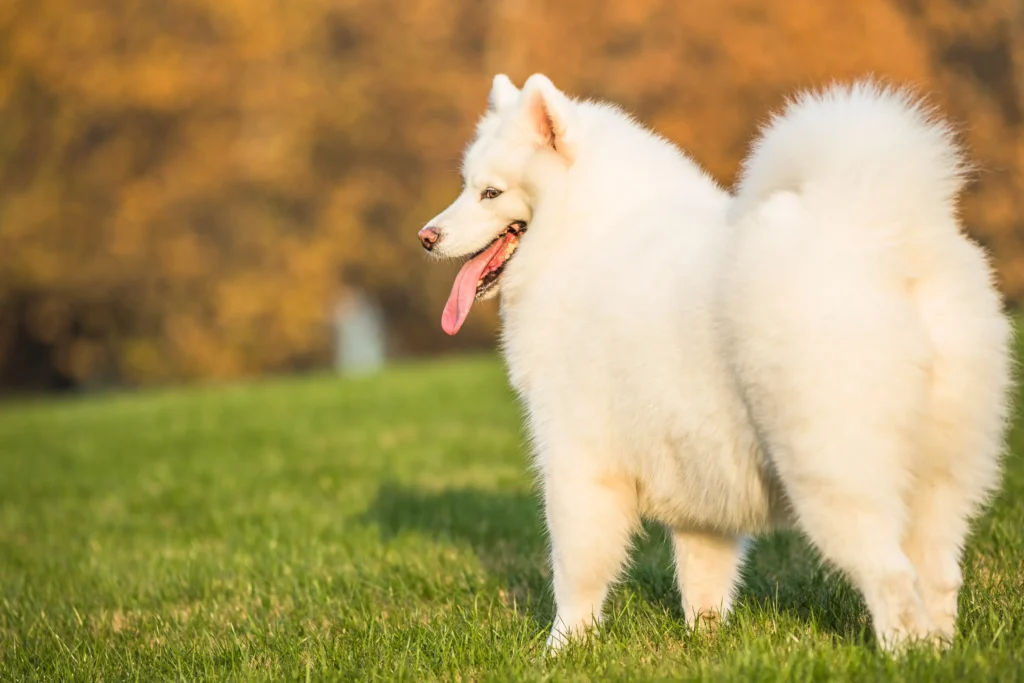
Weight: 85–115 pounds
Height: 25–32 inches
The Great Pyrenees is a gentle, protective mountain dog bred to guard livestock in cold regions. It is affectionate with children and calm indoors but enjoys outdoor adventures. Its thick double coat needs regular brushing to prevent matting.
14. Boerboel
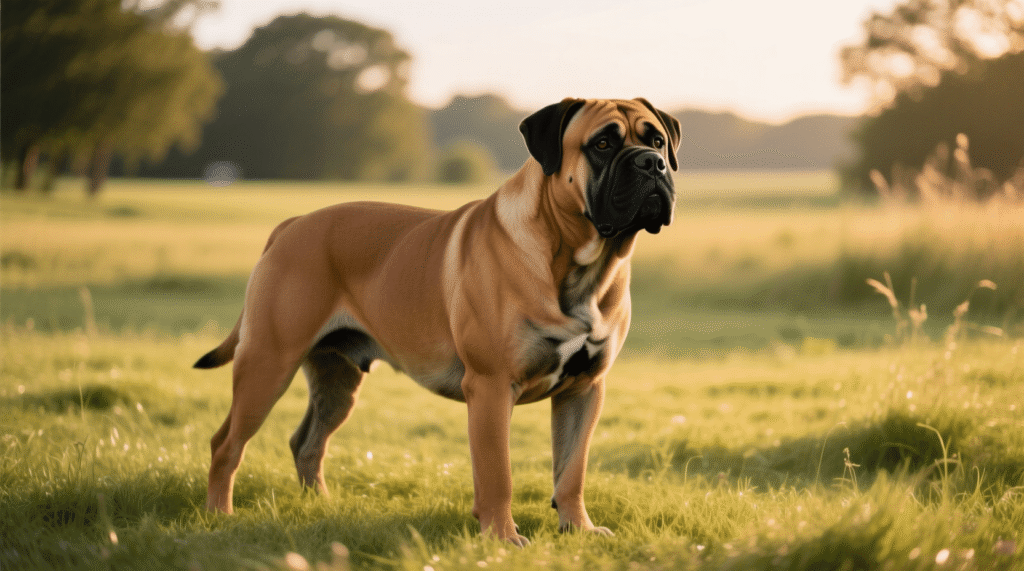
Weight: 150–200 pounds
Height: 24–28 inches
The Boerboel, originating from South Africa, is a muscular and confident guardian bred for farm protection. Its loyalty and strength make it a dependable companion for experienced owners. Early obedience training and structured routines are essential to manage its powerful instincts.
15. Dogue de Bordeaux
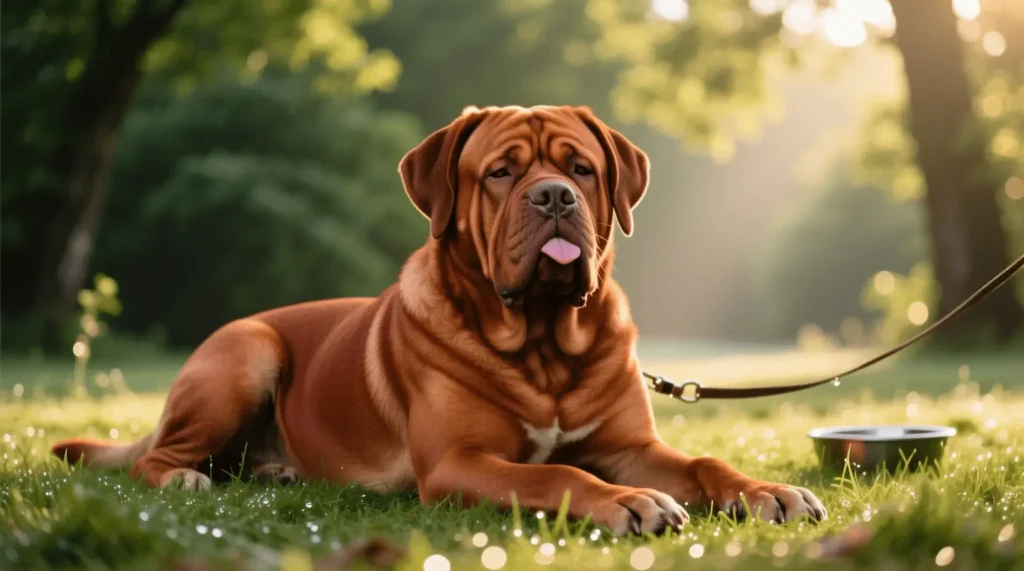
Weight: 99–110 pounds (or more)
Height: 23–27 inches
The Dogue de Bordeaux, or French Mastiff, is famous for its massive head and deep loyalty. This breed is affectionate but can be stubborn, requiring calm and consistent training. Owners should be prepared for regular drool cleanup and close monitoring of respiratory and joint health.
16. Tosa Inu
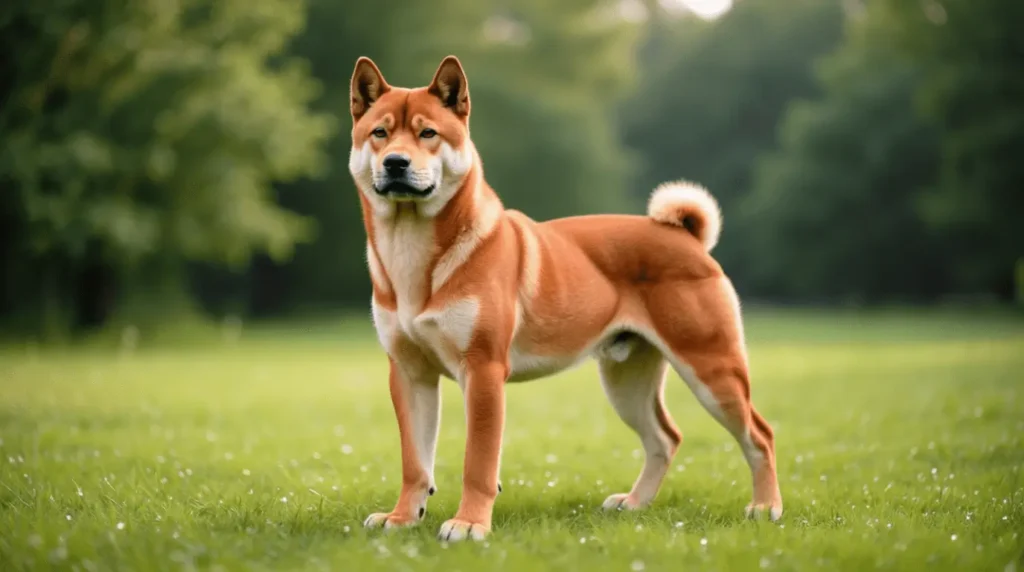
Weight: 100–200 pounds
Height: 22.5–27 inches
The Tosa Inu, a rare Japanese breed, was historically bred for controlled dog competitions emphasizing strength and composure. Today, it’s a loyal, protective companion needing confident leadership. Proper socialization helps balance its naturally reserved temperament.
17. Bully Kutta (Sindhi Mastiff)
Weight: 154–198 pounds
Height: 30–33 inches
Native to the Indian subcontinent, the Bully Kutta is a dominant and exceptionally strong guardian breed. Revered for its fearlessness, it requires experienced handling and consistent training. With firm yet compassionate leadership, it becomes a loyal protector and devoted family dog.
Breed by breed care tips (selective focus)
English Mastiff: Owing to their significant weight, joint care is very important. To start, utilise growth-controlled large breed puppy formulas. Additionally, provide a strong, supportive bed.
Great Dane: Due to their deep chest, this breed is at the highest risk for bloat. Do not provide elevated feeding bowls, as this tends to promote gulping.
Irish Wolfhound: Their tall, lanky build means potential orthopaedic issues, so exercise and nutrition are significant factors.
Neapolitan Mastiff: Due to skin folds, they will need to be cleaned frequently to prevent infections, and they drool a lot, so they require mats or waterproof surfaces.
Newfoundland: They love swimming; therefore, make sure they have access to very clean water, and have a groom to avoid skin infections.
Cane Corso / Anatolian Shepherd / Boerboel: These working dogs require mental and physical work; otherwise, they may become bored and destructive.
Bully Kutta: In the context of Pakistan/Indian, social or safety considerations around legal or social perception may exist. Emphasise responsible breeding, socialisation and training
Advice & Warnings for Future Owners
Space is a good question: most apartments or small yards will not be appropriate, as these dogs will need space.
Financial responsibility: food, vet bills, and grooming costs increase on scale.
Compatibility with your vet & groomer: make sure your local pet care options can physically accommodate your dog’s giant size. Not all vet clinics have the proper equipment.
Insurance/emergency preparedness: vet bills for giant dogs can get expensive fast.
Educating family and guests: even a friendly giant can accidentally knock over a child or person whilst playing.
Breeding ethics: Many giant breeds have inherited health issues. Have the breeder test for hips, elbows, heart, etc., if applicable.
Legal/cultural: there are areas (including some parts of Pakistan and India) where the Bully Kutta and other breeds may have special connotations or requirements; know your local laws.
Take realistic expectations: do not expect a giant dog to behave like a toy breed. They walk more slowly, eat differently, and age differently.
